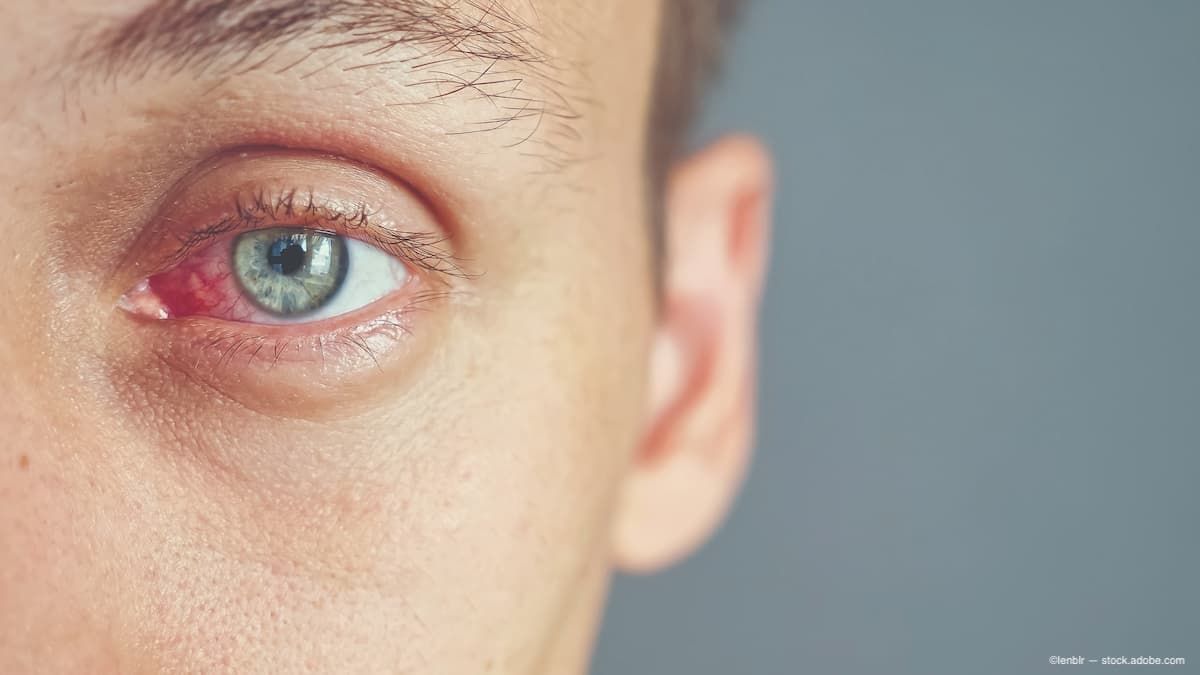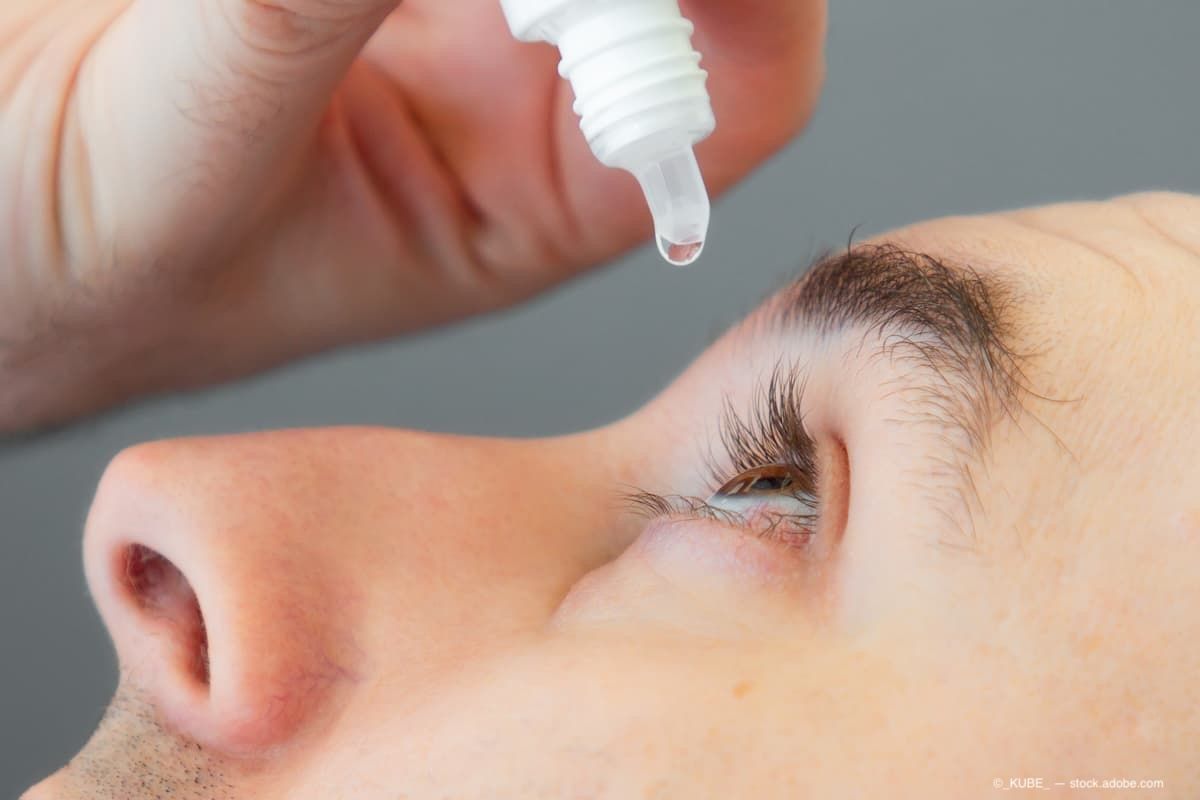Publication
Article
Digital Edition
Sjögren Syndrome: A three-part DED treatment plan and insights from a unique case
Author(s):
Physicians ask the right questions and take an aggressive approach to treatment.
(Image Credit: AdobeStock/lenblr)

Patients with Sjögren syndrome present some of our toughest dry eye disease (DED) cases, with recalcitrant aqueous deficient DED, often accompanied by evaporative disease and/or blepharitis. This chronic autoimmune disease that affects function of lacrimal and salivary glands1 is present in up to 1% of the population, primarily women (a 9:1 ratio over men), with signs and symptoms that usually appear in middle age.2 In roughly half of cases, Sjögren syndrome occurs alongside other autoimmune conditions such as rheumatoid arthritis or lupus.2
Because my colleagues and I have worked hard to raise awareness of how Sjögren syndrome affects the eyes, we see referrals from many doctors in our community, as well as patients who seek us out for DED treatment, unaware that they have Sjögren syndrome. These patients are often suffering terribly, so we ask the right questions and take an aggressive approach to treatment. Here are some insights from a recent case, as well as diagnostic tips and a 3-step approach to treatment.
Insights from a unique Sjögren case
A 60-year-old woman who was diagnosed with Sjögren syndrome 14 years ago sought out our practice for DED treatment, very frustrated with her very dry, red, burning eyes and blurred vision. Her systemic symptoms were otherwise well controlled through her rheumatologist.
The patient’s examination showed classic 3 o’clock and 9 o’clock conjunctival staining and a patchy pattern of corneal staining. The patient's SPEED score was 14/28, osmolarity was increased at 318 and 325, and MMP-9 was positive.
I prescribed medications: an immunomodulator (Cequa, Sun Pharmaceutical Industries) to decrease her hyperosmolar state and corneal staining; an on-label steroid for DED because of the corneal staining and positivemm-9; and varenicline nasal spray (Tyrvaya, Oyster Point Pharma) to increase her aqueous output through the lacrimal functional unit (along with increasing meibomian gland output and goblet cells). I also recommended a soothing artificial tear (iVIZIA, Thea Pharma) to support the front surface.
At our 4-week follow-up, we learned that the patient’s prescription plan prevented her from getting all 3 medications. As a result, she’d been using iVIZIA exclusively. Her words to me were, “I can’t believe it—this is the best I’ve felt in years.” That was a pivotal moment because we saw the effect of iVIZIA as a stand-alone therapy.
We enrolled the patient in a program to receive samples of Tyrvaya and got her on an affordable cash pay discount for Cequa. These efforts are very important because patients with Sjögren syndrome need a long-term, comprehensive plan and therapeutic management to help them reach the best possible visual outcomes. At our next visit, we had a happy patient. Corneal staining had improved, osmolarity had moved toward normal, and the patient’s overall comfort had improved dramatically since we first saw her, evidenced in a SPEED score of 6/28.
Getting a handle on Sjögren syndrome
To effectively manage DED, we need to know the details of each patient’s disease, Sjögren treatments, and past DED therapies.
Know the signs
Before the exam, I suspect Sjögren syndrome if a patient has another autoimmune disorder in their history or shows some sign of undiagnosed Sjögren syndrome, such as joint pain or carrying a big water bottle to alleviate dry mouth. During the exam, I look for the syndrome’s distinct conjunctival staining and patchy corneal staining pattern. If I suspect Sjögren syndrome, I order lab work, ask for a referral to a rheumatologist, and consider a lip biopsy. Patients with Sjögren syndrome are 5 times more likely to get lymphoma, so an accurate diagnosis is essential.3
When Sjögren syndrome is already diagnosed, determine if it’s well controlled
When systemic disease is uncontrolled, so is the ocular surface, making DED much harder to manage. For example, one well-controlled patient of mine suddenly presented with an acute DED flare before scheduled cataract surgery. It turned out she’d decided to stop all of her systemic Sjögren medications before surgery. If a patient’s Sjögren syndrome isn’t well controlled, I urge them to see their rheumatologist.
Get a history of previous DED therapies
I get an exhaustive list of all the over-the-counter eye drops patients have used, as well as feedback on any prescription medications they’ve tried. In most cases, they’ve been using inexpensive eye drops 4 to 10 times per day, resulting in preservative-driven toxicity, rather than high-quality lubrication that supports the ocular surface. Some of those who have used immunomodulators say they “didn’t really do anything.” An important follow-up question is, “How long were you on the therapy?” I often find that they didn’t utilize the medication long enough to produce significant therapeutic effects. It’s a classic example of the importance of setting expectations.
Rely on objective signs
Signs and symptoms of DED don’t always align, so we can’t base therapeutic outcomes on symptoms alone. In addition to checking staining in Sjögren syndrome patients, we test tear breakup time, osmolarity (ScoutPro Osmolarity System, Trukera Medical), and MMP-9 (InflammaDry, Quidel), and we recheck these metrics at follow-up visits. In the future we will add the test for lactoferrin and IgE (T-POC Lactoferrin, Verséa Ophthalmics).
Three-part DED treatment for Sjögren syndrome patients
Although Sjögren syndrome initiates aqueous deficient DED, all of my Sjögren patients also have other DED problems, such as meibomian gland dysfunction (MGD), rosacea, and/or demodex blepharitis. Treatment goals are to stimulate aqueous production, support the ocular surface, and alleviate other contributing conditions.
1. Stimulate aqueous production
To encourage atrophied lacrimal glands to produce more aqueous, we turn to therapies that stimulate the nasal nerve, which in turn stimulates the lacrimal functional unit (lacrimal gland, accessory glands, meibomian glands, and mucin-producing goblet cells). Our mechanical option is a small external device (iTEAR100, Olympic Ophthalmics) and the chemical option is varenicline nasal spray.
2. Support the ocular surface
Sjögren patients should use artificial tears at least 4 times per day (breakfast, lunch, dinner, and bedtime), which makes it essential to use a preservative-free formulation. I recommend iVIZIA because the combination of povidone, hyaluronic acid, and trehalose has osmoprotective properties for the ocular surface.4 The practical advantages, including an accurate, easy-to-use, multidose bottle, contact lens compatibility, and widespread availability, make it an easy decision for me. I often use punctal plugs to retain aqueous on the surface, and I prescribe an immunomodulator such as cyclosporine (Cequa; Restasis, Allergan) or lifitegrast (Xiidra, Novartis) for patients with hyperosmolarity.
3. Alleviate contributing conditions
Targeted interventional treatments for MGD, ocular rosacea or demodex blepharitis follow the same regimen as patients without Sjögren syndrome. For example, patients with ocular rosacea have intense pulsed light treatment (Icon, Cynosure; OptiLight, Lumenis) and a combination of heat and expression (iLux, Alcon; LipiFlow, Johnson & Johnson; TearCare, Sight Sciences).
In addition to the 3 treatments steps, we also direct all Sjögren patients to the Sjögren’s Foundation (Sjogrens.org) for information and support. It’s also an excellent resource for doctors to find support in treating the unique needs of Sjögren syndrome patients.

Selina R. McGee, OD, FAAO
P: 405-341-2062
McGee is the founder and chief optometrist at BeSpoke Vision in Edmond, Oklahoma. She is a consultant for Thea Pharma Inc.
References:
Migkos MP, Sarmas I, Somarakis GA, Voulgari PV, Tsamis KI, Drosos AA. Sjögren syndrome associated with inflammatory muscle diseases. Mediterr J Rheumatol. 2018;29(2):92-96. doi:10.31138/mjr.29.2.92
Carsons SE, Patel BC. Sjogren Syndrome. 2023 April 3. In:StatPearls [Internet]. Treasure Island (FL): StatPearls Publishing; 2023. PMID: 28613703
Voulgarelis M, Dafni UG, Isenberg DA, Moutsopoulos HM. Malignant lymphoma in primary Sjögren’s syndrome: a multicenter, retrospective, clinical study by the European Concerted Action on Sjögren’s Syndrome. Arthritis Rheum. 1999 Aug;42(8):1765-1772. doi:10.1002/1529-0131(199908)42:8<1765::AID-ANR28>3.0.CO;2-V
Fondi K, Wozniak PA, Schmidl D, et al. Effect of hyaluronic acid/trehalose in two different formulations on signs and symptoms in patients with moderate to severe dry eye disease. J Ophthalmol. 2018 Aug 1;2018:4691417. doi:10.1155/2018/4691417

Newsletter
Don’t miss out—get Ophthalmology Times updates on the latest clinical advancements and expert interviews, straight to your inbox.




